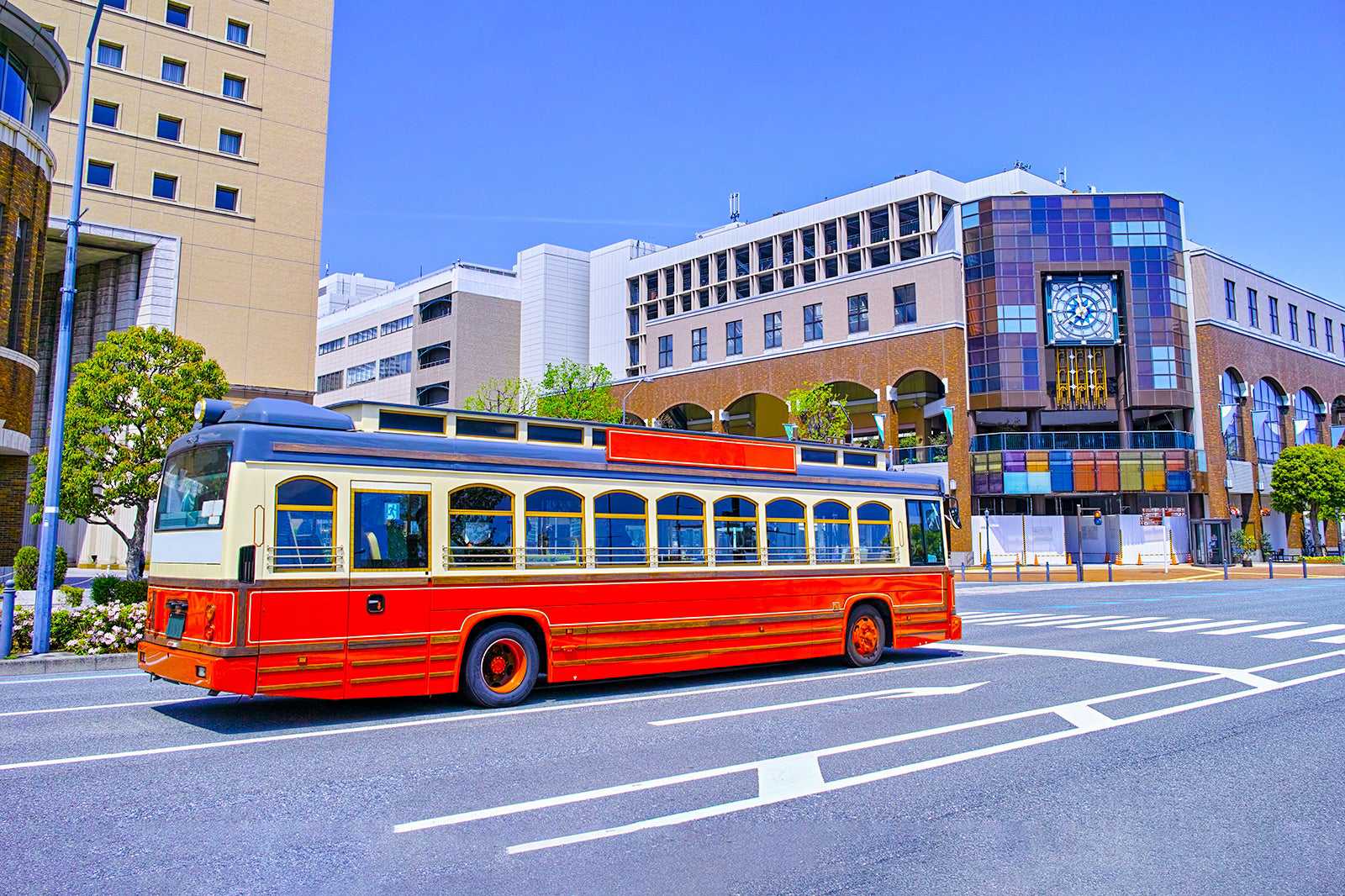The key to successful planning for a trip to Yokohama is to know in advance what's happening and when, where to stay, and your options for getting around. Here's some basic information that should prove useful.
Of course, everything depends on the purpose of your visit. Have you decided which sightseeing spots you want to check out? Yokohama has thrived ever since the port was opened, giving birth to exotic scenery and unique culture. There's also plenty of entertainment for families and couples.
When is the best time to visit Yokohama?
Spring and autumn are perfect for travelling in mild climates

In spring, under blue skies and pleasant weather, you can promenade through the city and parks surrounded by cherry blossoms and many other flowers. Or you might want to head out to the Bay Area, where the spectacular view is enhanced by the sea breeze.
- In summertime, the temperatures often exceed 35°C. In winter, it rarely snows and is seldom colder than 0°C. But it’s fair to say that spring and autumn are the most comfortable seasons.
- The climate is mild throughout the year, but June is the rainy season, and August and September tend to be hot and humid, with torrential rains and typhoons.
- August is the hottest month. The average temperature rises to 30°C, and air conditioning is a must.
- Why not spend a day walking around the city in the refreshing spring weather? In autumn, touring Japanese gardens and parks is a fantastic way to admire the changing colours. In winter, there are brightly sparkling illuminations to check out.
Basic information on Yokohama
Double-check before your trip from outside Japan

- Plug type: A / B
- Voltage: 100 V
- Currency: Yen (¥)
- International dialling code: +81 45 / 42 / 44
- Emergency call number: 110 (police) / 119 (firefighting) / 118 (sea)
Confira também
- 10 Best Things to Do for Couples in Yokohama

10 Best Things to Do for Couples in Yokohama
Japan - 10 Things to Do in Yokohama on a Small Budget

10 Things to Do in Yokohama on a Small Budget
Japan - 10 Best Things to Do After Dinner in Yokohama

10 Best Things to Do After Dinner in Yokohama
Japan
Getting to accommodation facilities in Yokohama
With its huge terminal, Yokohama is easy to get to

Yokohama boasts excellent accessibility from all over Japan. You can easily get here by train from places such as Tokyo, Kamakura, and Hakone. Many hotels are clustered around Yokohama, the terminal station, and Shin-Yokohama, where the Shinkansen bullet train stops, making it a prime location for sightseeing in the Kanto region. Go to Minatomirai if you’re looking for scenic views and stunning night scenery. Plenty of luxury hotels offer rooms with a view of the ocean. Kannai and Yamashita Park are highly recommended if you’re looking to explore the history, culture, nature, and feeling and atmosphere of Yokohama.
- Take the Narita Express train from Narita Airport, or catch a limousine bus from any of the major companies for a 90-minute ride. From Haneda Airport, it takes about 30 minutes by train on the Keihin Kyuko Railway or by Keihin Kyuko Bus.
- The Shinkansen from Kansai stops at Shin-Yokohama Station. Many routes from Tokyo areas arrive at Yokohama, the terminal station. There are also express buses connecting to cities throughout Japan.
- The Osanbashi Yokohama International Passenger Terminal welcomes cruise ships and ferries from various parts of Japan and abroad. You can also use the Nishihama Pier Passenger Terminal and the ferry terminal at the Port of Kurihama in Yokosuka City, Kanagawa Prefecture.
Getting around in Yokohama
Transport options for sightseeing in Yokohama City from a hotel base

The Yokohama Station and Shin-Yokohama Station area, where hotels are concentrated, the seaside Minatomirai area, and the Kannai or Yamashita Park areas for experiencing history and culture — all are accessible by public transport for sightseeing. Driving trips by car and bicycle rentals are other popular options.
- The BAYSIDE BLUE and Akai Kutsu sightseeing buses running to tourist attractions in Yokohama City offer rides from bus stops close to hotels.
- The one-day Minato Burari Ticket, offering unlimited rides on city buses and subways in the Yokohama waterfront area, is another convenient way to get around the city. If you’re planning to use the Shin-Yokohama Municipal Subway Station to transfer to a bullet train, the Minato Burari Ticket Wide is another option.
- You might also want to try the Yokohama Minatomirai Pass, a one-day pass that allows unlimited rides on the JR East Japan Keihin-Tohoku Line, the Negishi Line from Yokohama Station to Shin-Sugita Station, as well as on the Minatomirai Line. For the Minatomirai Line only between Yokohama Station and Motomachi.Chuukagai Station, the Minatomirai Line One-Day Pass is a great choice.
- Water buses offer a unique transport option for any Yokohama trip. These services connect Pier Zou-no-Hana to Pier Canal Park and Pier Nipponmaru. The Yokohama Sea Bass cruises from Yokohama Bay Quarter at the East Exit of Yokohama Station to Yamashita Park.
Yokohama's famous events
Yokohama comes to life with festivals spanning from the city to the sea

Chinese New Year
- January or February
- Spring Festival is celebrated on the first day of the Chinese Lunar New Year. Following a countdown with exploding firecrackers, you’ll get to see spectacular performances of Chinese lion dances, Chinese acrobatics, and Chinese opera.
- Location: Yokohama Chinatown
Yokohama Port Festival
- Early June
- Since the opening of its port in the late Edo period, Yokohama has developed along with the civilisation of Japan, and this festival is an iconic part of Yokohama’s culture as a port city. Various events are held both on the sea and on land.
- Location: Around the Red Brick Warehouse
Yokohama Sparkling Twilight
- Mid-July
- This festival is held around the time of Marine Day under the concept of helping people connect with the sea and the port. The highlight of the festival is the launching of fireworks on the sea in front of Yamashita Park.
- Location: Around Yamashita Park
Yokohama's main tourist attractions
Visit popular spots that convey the old and new culture of Japan

Yokohama Landmark Tower
One of the most stunning viewpoints in Yokohama, found in Minatomirai. The evening views from the "Sky Garden" observation floor are spectacular, and if you’re lucky you might even be able to see Mt. Fuji in the distance. The fascinating night view of neon lights, including the Ferris wheel, is also exceptional.
Sankeien
More and more people want to experience the natural scenery of Japan’s 4 seasons and feel the touch of the Japanese spirit. Historical buildings are relocated in this vast Japanese garden, assembled from Kyoto, Kamakura, and other places in Japan. It's also famous as a spot for viewing the autumn leaves.
Sojiji
This temple is known for its spacious precincts and large-scale architecture. Zazen meditation sessions held in both Japanese and English attract many international tourists. Many celebrities such as Yujiro Ishihara are laid to rest here, and there's no end to the number of people who visit the temple to pray for their graves.
Este artigo inclui opiniões da equipe editorial dos Go Guides. A Hoteis.com remunera os autores dos textos publicados neste site, o que pode incluir custos de viagens e outras despesas.
Planeje agora sua viagem
Onde ficar em Yokohama
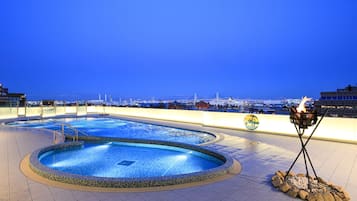
APA Hotel & Resort Yokohama Bay Tower
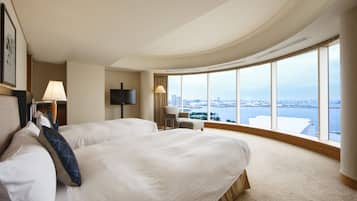
The Yokohama Bay Hotel Tokyu

Oakwood Suites Yokohama

Citadines Harbour Front Yokohama
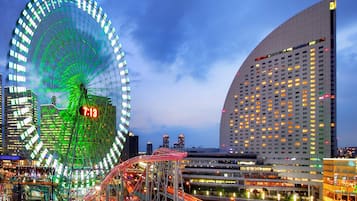
InterContinental Yokohama Grand by IHG

SOTETSU HOTELS THE SPLAISIR YOKOHAMA
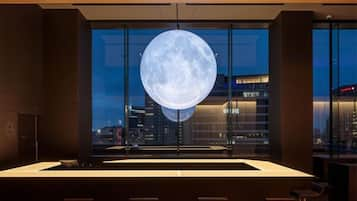
Yokohama Tokyu REI Hotel

New Otani Inn Yokohama Premium
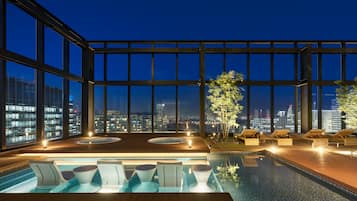
Mitsui Garden Hotel Yokohama MM Premier

Hotel The Knot Yokohama
Artigos relacionados
- 10 Best Things to Do for Couples in Yokohama

10 Best Things to Do for Couples in Yokohama
Japan - 10 Things to Do in Yokohama on a Small Budget

10 Things to Do in Yokohama on a Small Budget
Japan - 10 Best Things to Do After Dinner in Yokohama

10 Best Things to Do After Dinner in Yokohama
Japan - 10 Iconic Buildings and Places in Yokohama

10 Iconic Buildings and Places in Yokohama
Japan - 10 Best Places to Find Local Food in Yokohama

10 Best Places to Find Local Food in Yokohama
Japan - 10 Best Things to Do in Yokohama

10 Best Things to Do in Yokohama
Japan - 10 Best Family Things to Do in Yokohama

10 Best Family Things to Do in Yokohama
Japan - 10 Best Local Dishes from Yokohama

10 Best Local Dishes from Yokohama
Japan
